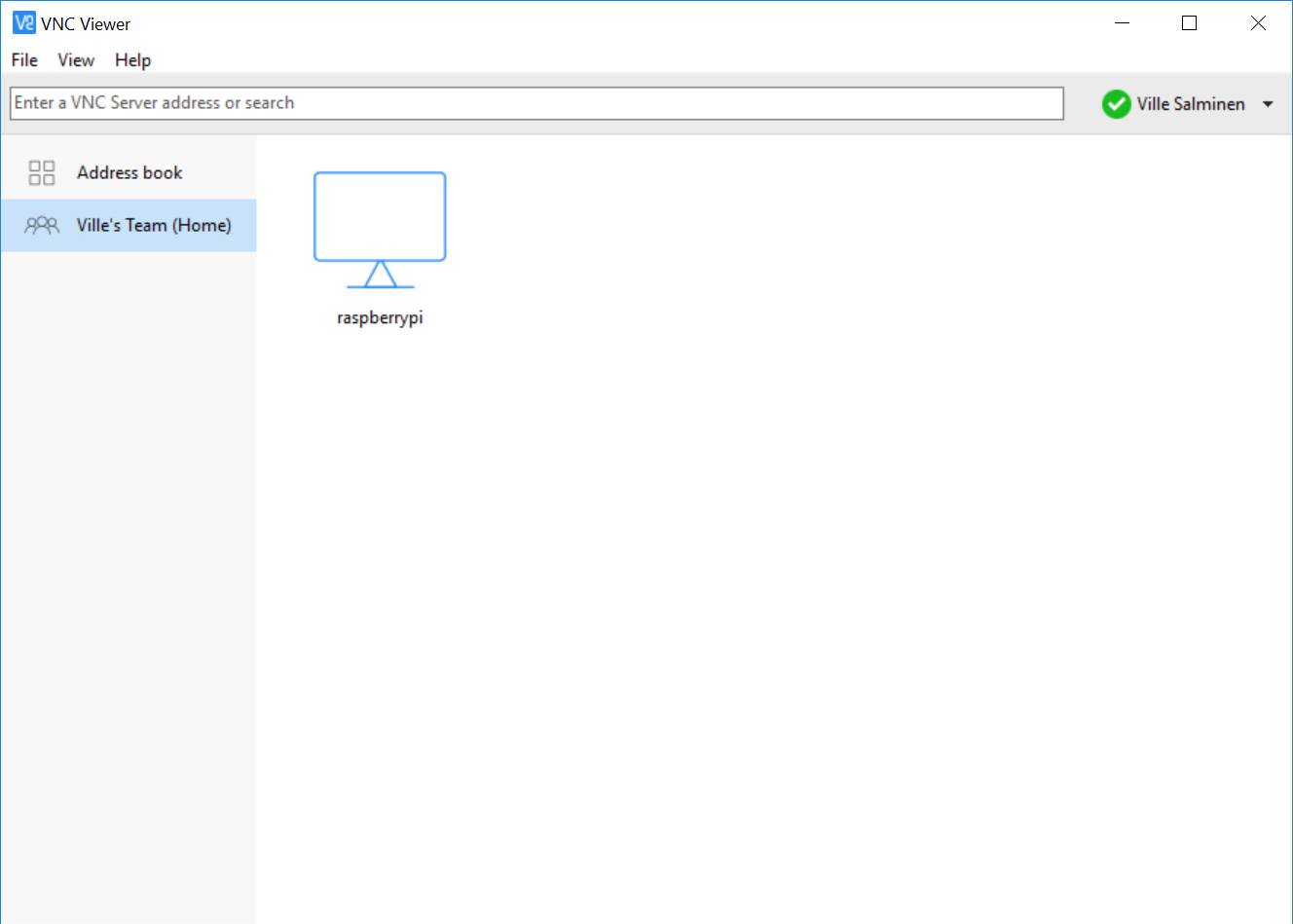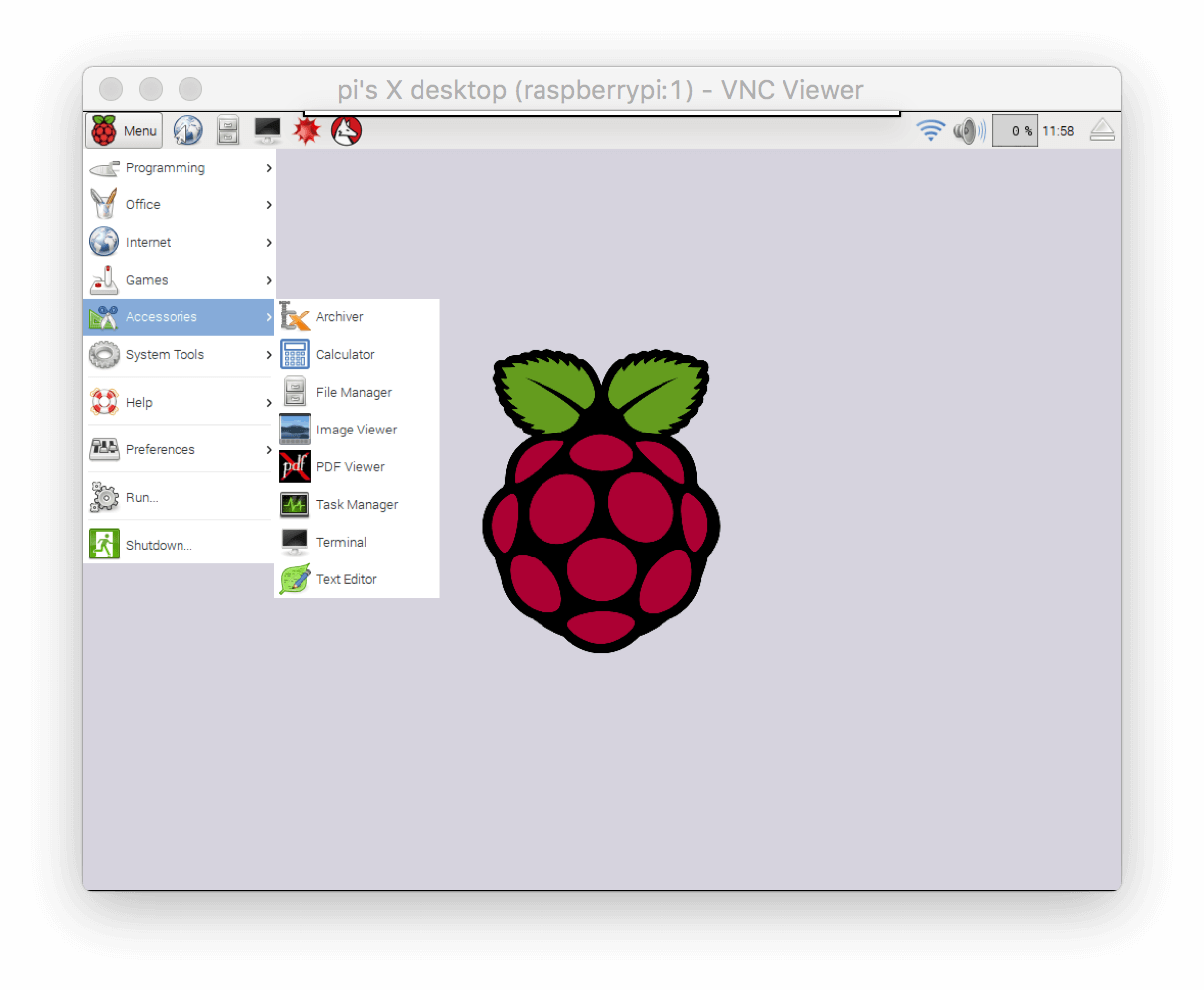

VNC is a graphical desktop sharing system that allows us to remotely control the desktop interface of our RPI (running VNC Server) from another computer or mobile device (running VNC Viewer). We are going to use a VNC provider for that. Now that you know how to ssh into the RPI, we need to use it in GUI mode. There’s only a single step remaining to get in to your RPI’s desktop environment. Ssh default settings, the password would be just raspberry You can wither use PuTTY if you are on windows or your terminal on a *nix system. Now, copy the IP of your RPI Step 3 - SSH in to your RPI (Headless mode) You need to find the connected list of devices of your router. Normally you can head over to 192.168.1.1 or if you are using a NETGEAR router. Give it a minute to settle down.Īfter that, we need to find the local IP of our RPI for us to be able to SSH into it. We need to connect the RPI to the router with an ethernet cable (RJ45) and boot it up. Safely eject, unplug the microSD card and chuck the microSD card in to the RPI’s slot. For us to be able to connect via ssh later, we need to create an empty file called ssh at the root of the drive (without any extension). Now, open the microSD drive in your Windows Explorer or Finder. And the best part is that VNC Viewer is free. Don’t do that 😀 Otherwise, you will find yourself doing this step over and over again. VNC Viewer is a way for you to access and control your Raspberry Pi desktop from another computer such as a Mac or Windows machine. If you are using Windows, it will ask you to format the drive when opened with Windows Explorer. I used balenaEtcher since it was pretty straight forward to use. Once you have got the ISO downloaded we need to flash it to a microSD card. Now, if you followed my other Instructable on using PuTTY to ssh your Pi, then you just need to ssh your pi now, and type in the following bits of code that are in bold: sudo apt-get update & sudo apt-get upgrade. Change the selections to what is in the picture above. I would recommend selecting “with Desktop” option if you are planning to use it with a window manager. In the installation menu, you only want to install the VNC viewer, so in the installation menu, select 'custom'. So I will start a new thread and not hi-jack this one.My choice of OS for the RPI is Raspbian since it’s easy to get started with and comes with a lot of tools out of the box. This morning - I can't get the P-Star Dashboard to work. Last night all was fine and both my ID 51A & 5100 were connecting to the Hot Spot and the Pi-Star Dashboard on the win 10 pc was connecting. I did Google the subject before posting but not the right phraseology :0). Dave - thanks for the Google query suggestions.

Previously, I have cover the same tutorial for Windows. For Raspberry Pi Zero/W/WH, we can use OTG USB as a local network to PC/Mac.

Normally when we talk about PC remote, we need network either WiFi or LAN. For Mac we can use VNC Viewer to remote Raspberry Pi.

Bob you were quite correct that the Pi- Star image does not support VNC. For Windows we have Remote Desktop software which is already installed in the OS. So I have learned that the Pi-Star Dashboard is my interface to the Pi & DvMega and I don't need to use VNC. Now that I have time to really delve into it, I need to learn the nuts and bolts myself. when I first acquired the hot spot and pi, a friend did all the heavy lifting. As I said in my initial post, raspberry pi and hot spots is a totally new subject area for me. Fred, Bob, Dave- appreciate your time and suggestions.


 0 kommentar(er)
0 kommentar(er)
